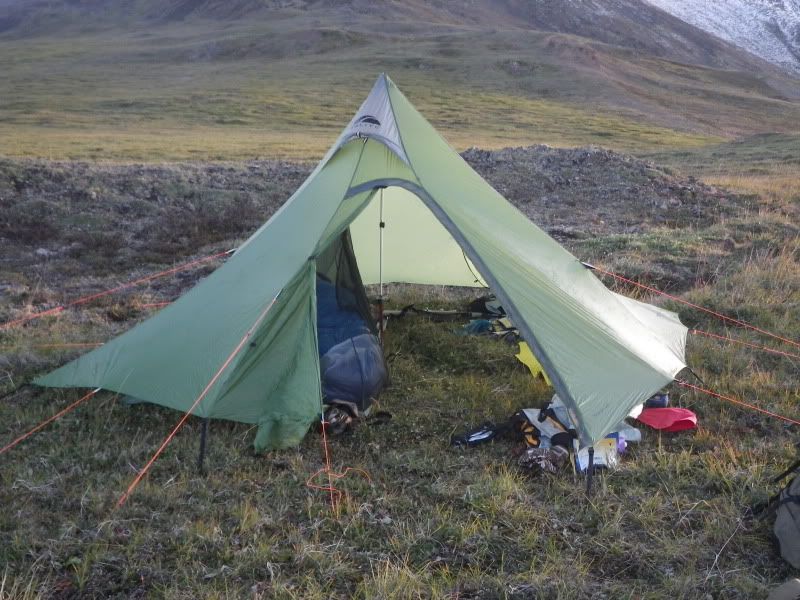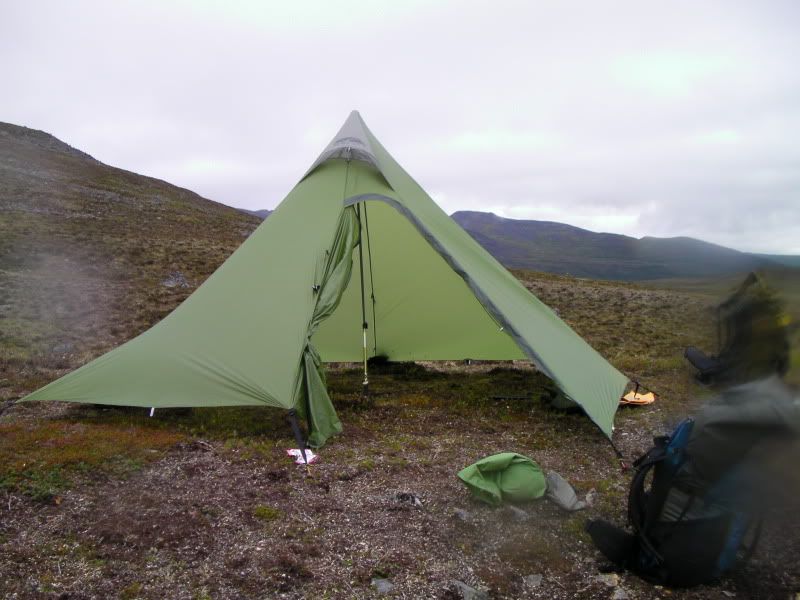Browtinemt
WKR
I'm trying to get set up for backpack bow hunting elk in sept-oct in MT, in the timber, possibly with my buddy. So I was going to buy a Hilleberg for my first forays into the hills because it was pretty idiot proof and would exceed anything I could put it through, but then life gave me a booty call and it apparently still wants to f^@% me. So now I'm looking at going with a Go-Lite Shangrila 5 without the nest, down quilt from enlightened equipment, a cheaper cc foam pad and a ti goat bivy (kestral?)...which combined is still cheaper than the Hilleberg. I've read over a bunch of older posts on floorless camping and several have stated rain/moisture/condensation is a non-factor when the SL5 is pitched right. Please excuse my ignorance as I've only camped in tents before, but am I understanding this right that you elevate the bottom for venting when humid, but lower it for rain? Isn't it humid while it's raining? Please help me understand the correct pitches for all the occasions you endure while on the mountain. Maybe this would be a good topic for one of Aron's pod casts? Also, any recommended changes/additions to my proposed setup would be greatly appreciated. Thanks for any feedback, you folks are the best.



